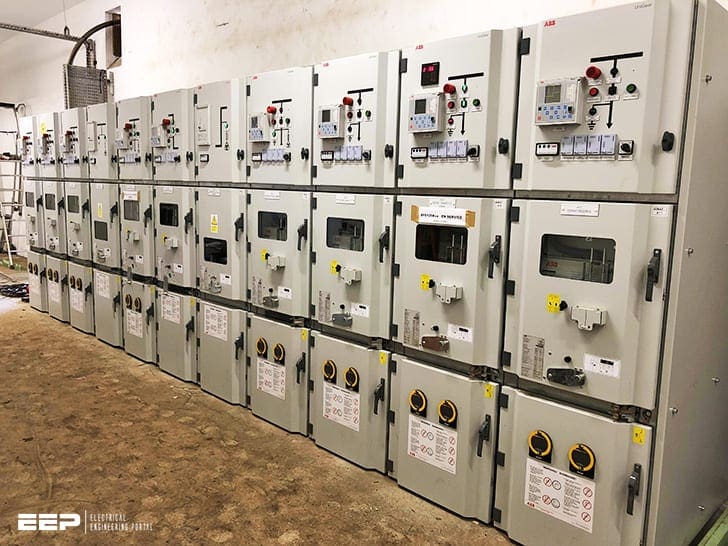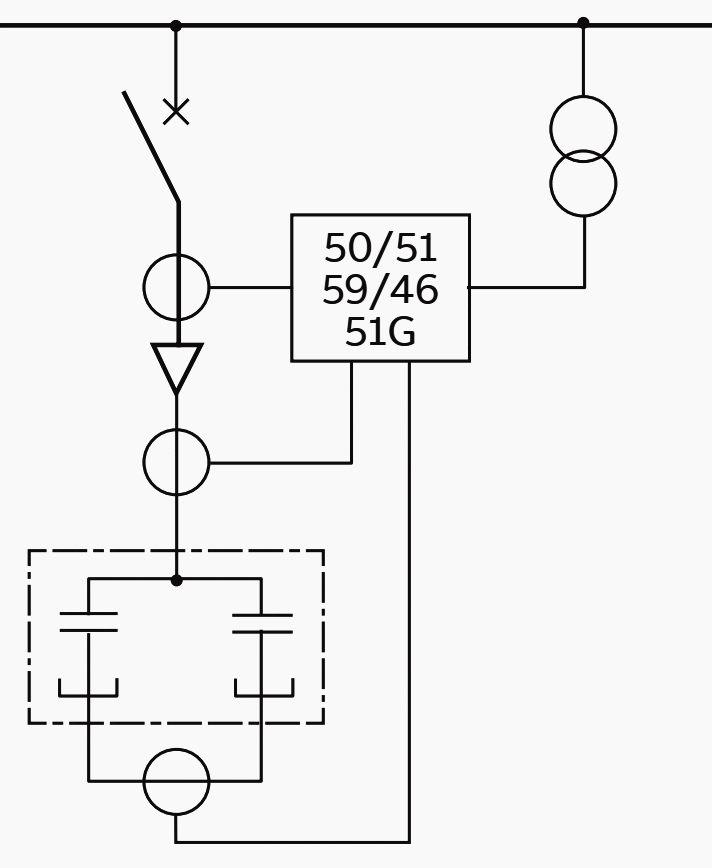MV switching applications
When it comes to breaking the magnetizing current in the case of no-load transformers, one must first bear in mind that there are no type tests for this operation, first because it is less severe than others and second because it would be difficult to reproduce in a model.

This task is not particularly challenging for oil-immersed transformers. The current amplitude is negligible. It can be less than 1 A in modern, low loss transformers.
Both SF6 and vacuum circuit breakers can be easily used for these types of transformers.
Whatever the case, overvoltages depend on the length of the cables that connect the circuit breaker to the transformer, so the longer the cable, the less over-voltage there will be.
3.5 p.u. is the maximum value the overvoltage can reach, so careful assessments must be made when these transformers are used and devices able to limit the over-voltages must be installed when necessary.

Protection relays for transformers Power transformer switching is one of the typical and most frequent applications for medium voltage circuit breakers. Circuit breakers are normally required to perform a very limited number of operations, only a few each year in many cases.
However, there can be exceptions, such as pumping stations and arc furnaces where a high number of switching operations is required.
However, the medium voltage circuit breaker may also be required to operate following a fault in the actual transformer or medium voltage riser and for putting back into service after an opening due to a fault or maintenance.
The protections required on a power transformer and that can cause the circuit breaker to open are:
- relay 49 thermal overload protection;
- relay 51 inverse time overcurrent protection;
- relays 51 or 50 overcurrent protection for shortcircuit on secondary side;
- relay 50 overcurrent protection for short-circuit on primary side;
- relay 87T residual-current protection of transformer;
- relay 51G-MV overcurrent protection for earth fault on primary side;
- relay 51G-LV overcurrent protection for earth fault on secondary side;
- relay 26 temperature-rise protection;
- relay 63 over-pressure protection (only for oil-cooled/insulated transformers).
A few transformer protection system configurations are illustrated in figure above.
Capacitor switching and protection apparatus
As mentioned previously, switching capacitor banks is a delicate operation both on opening. Standard IEC 62271-100 establishes preferential values for switching capacitive currents.
The preferential value for current interruption in single or back-to-back banks is 400 A for all voltage values.

Regarding inrush current, the Standard governing circuit breakers does not provide values for single capacitor banks since this condition is not considered critical. On the other hand, 20 kA peak value and 4250 Hz frequency are given as preferential values for back-to-back capacitor banks.
When it comes to interrupting capacitive loads and similarly to circuit breakers, there are two classes for contactors regarding their behavior in relation to restrikes:
- Class C1: low probability of restrike, demonstrated by type tests
- Class C2: very low probability of restrike, here again demonstrated by type tests
| Title: | The basics of MV switching equipment for protecting electrical installations – ABB |
| Format: | |
| Size: | 20.8 MB |
| Pages: | 124 |
| Download: | Here 🔗 (Get Premium Membership) | Video Courses | Download Updates |



I am sbusiso Nhlabathi a qualified electrical technicia who served at ABB for 3years currently at EBA services for 1 year 7months I want a job change to advance my career.
Very informative and detailed. Please keep it coming
Thank you Jude.
“In dry transformers, the main problem when the vacuum current is opened concerns over-voltages due to the chopping current and multiple reignitions”
– This statement makes absolutely no sense , it implies that there is a difference in opening a circuit breaker for a Dry-type transformer compared to other types of transformers which is not the case.
– This statement also implies one must use SF6 insulated switchgear for dry-type transformers, which has no technical justification as there is no differnece in the over voltage spikes between dry-type or oil transformers